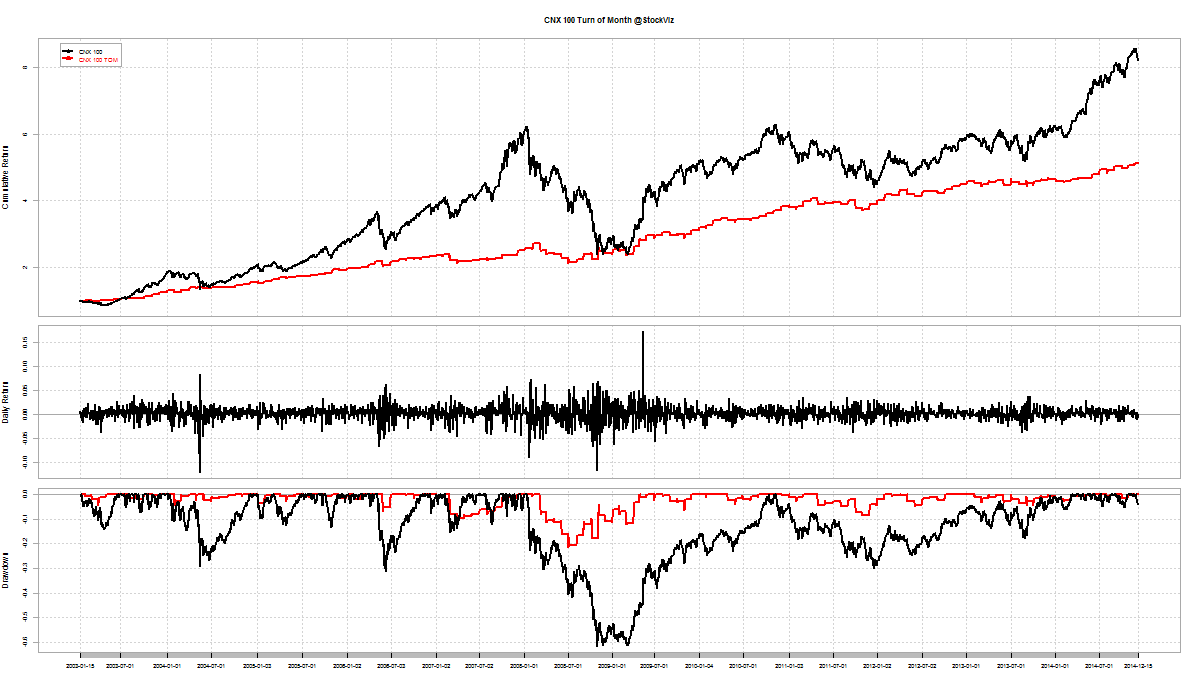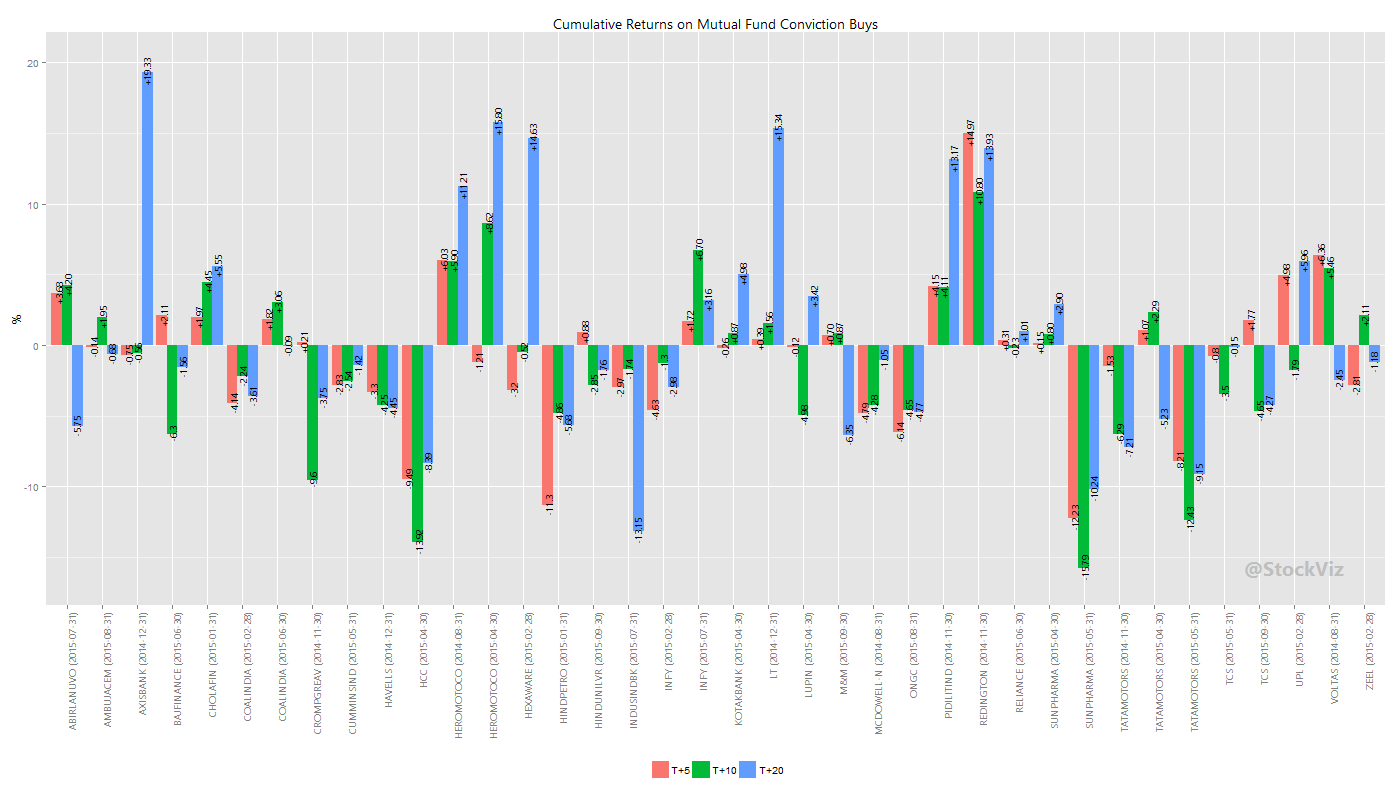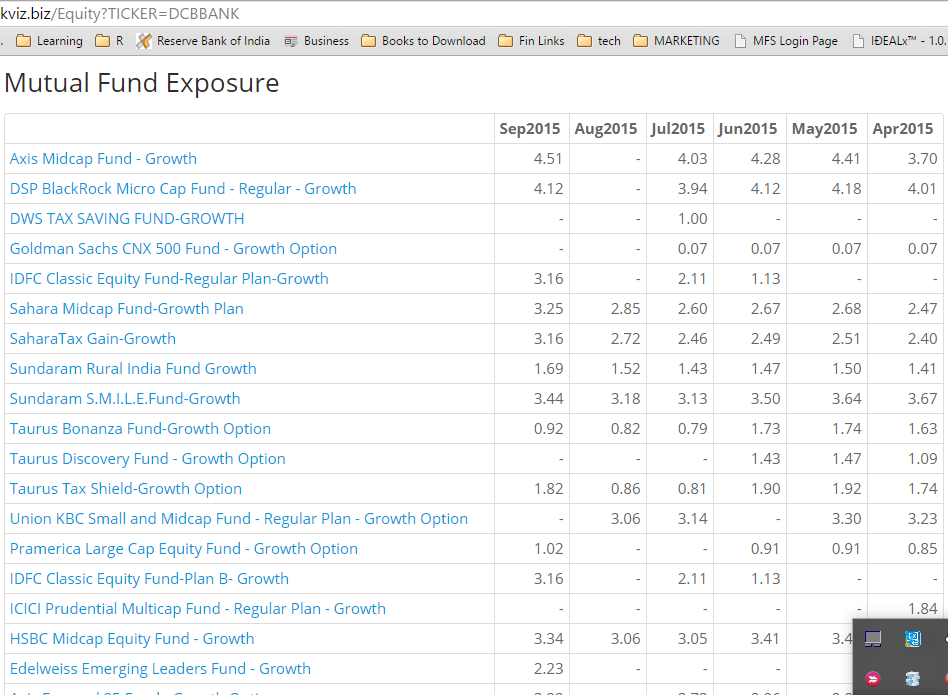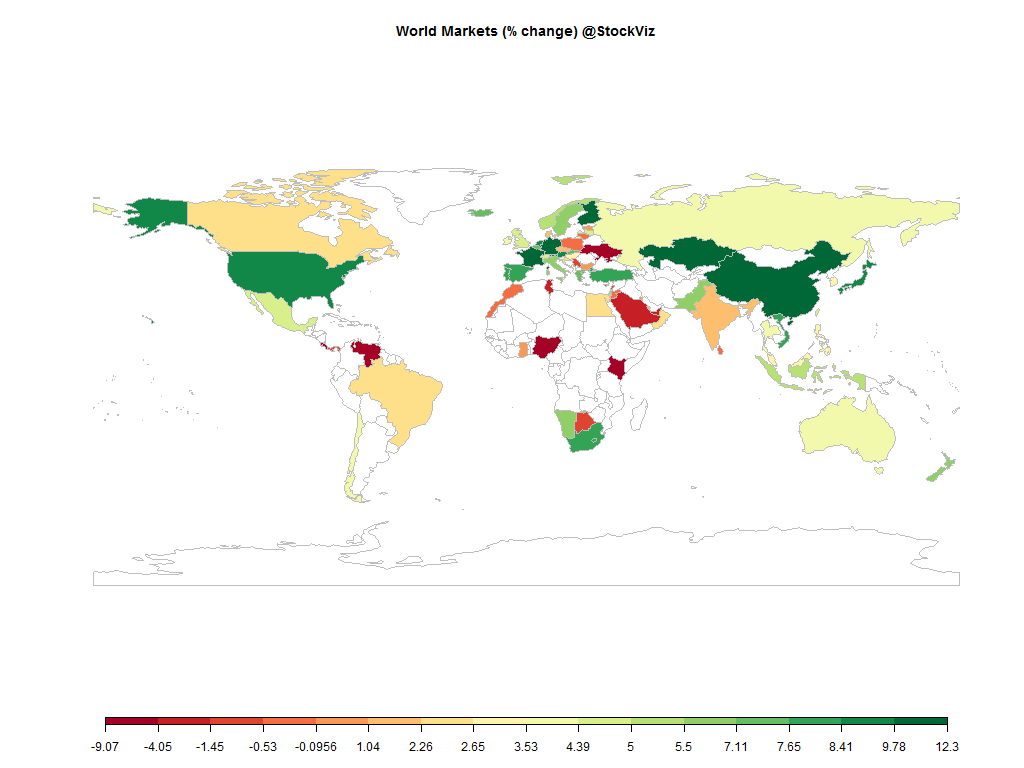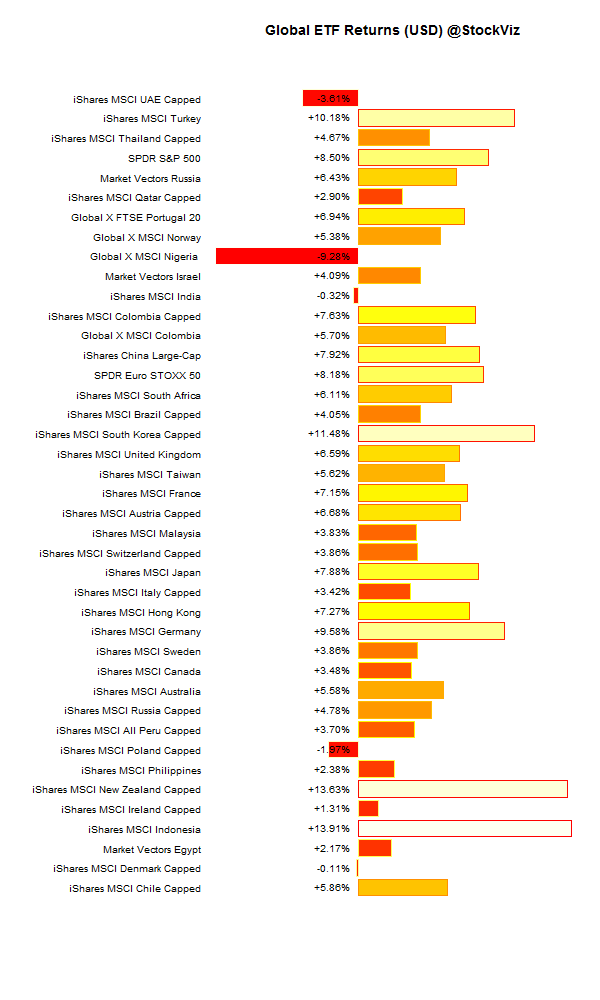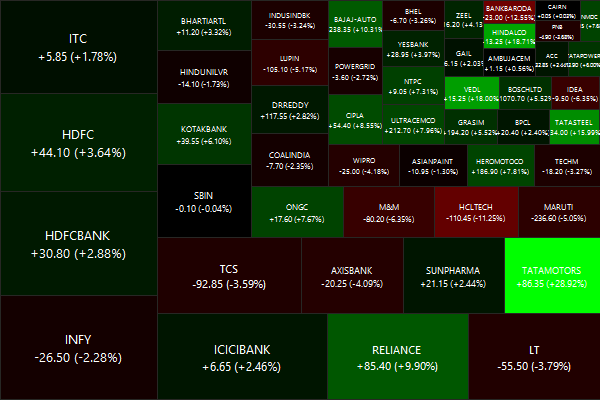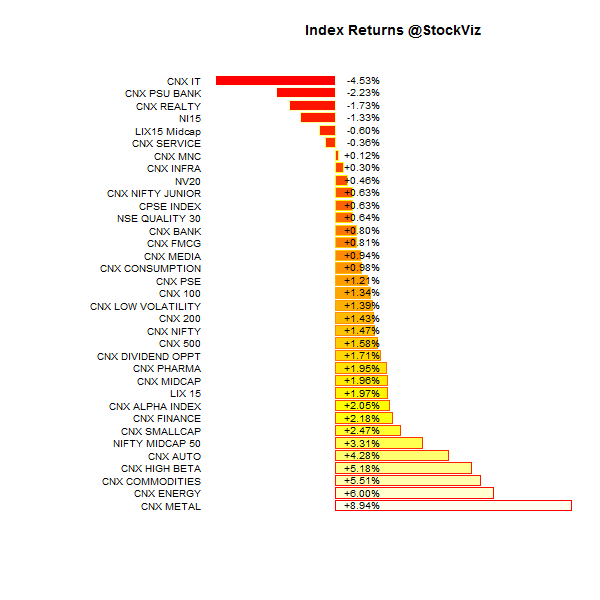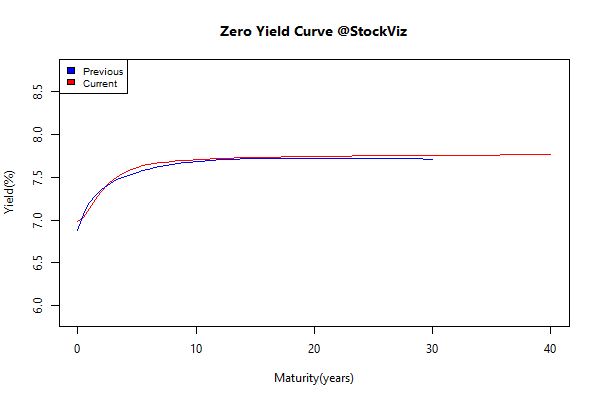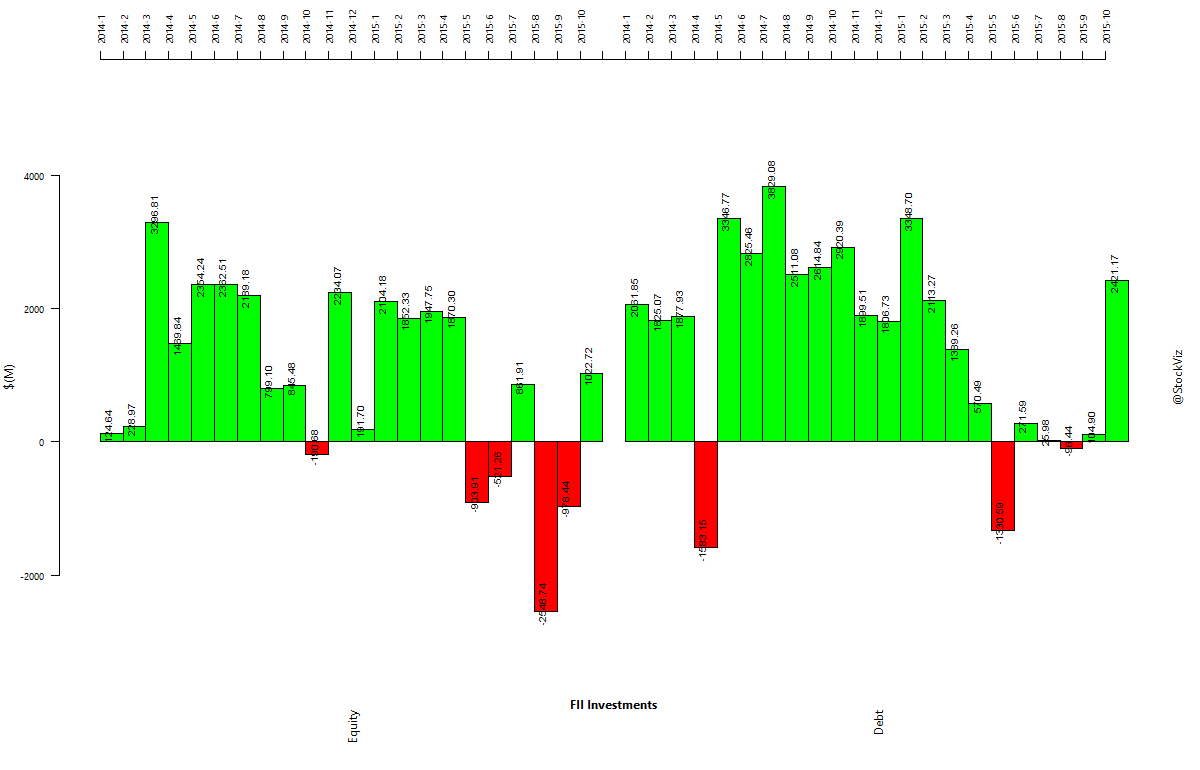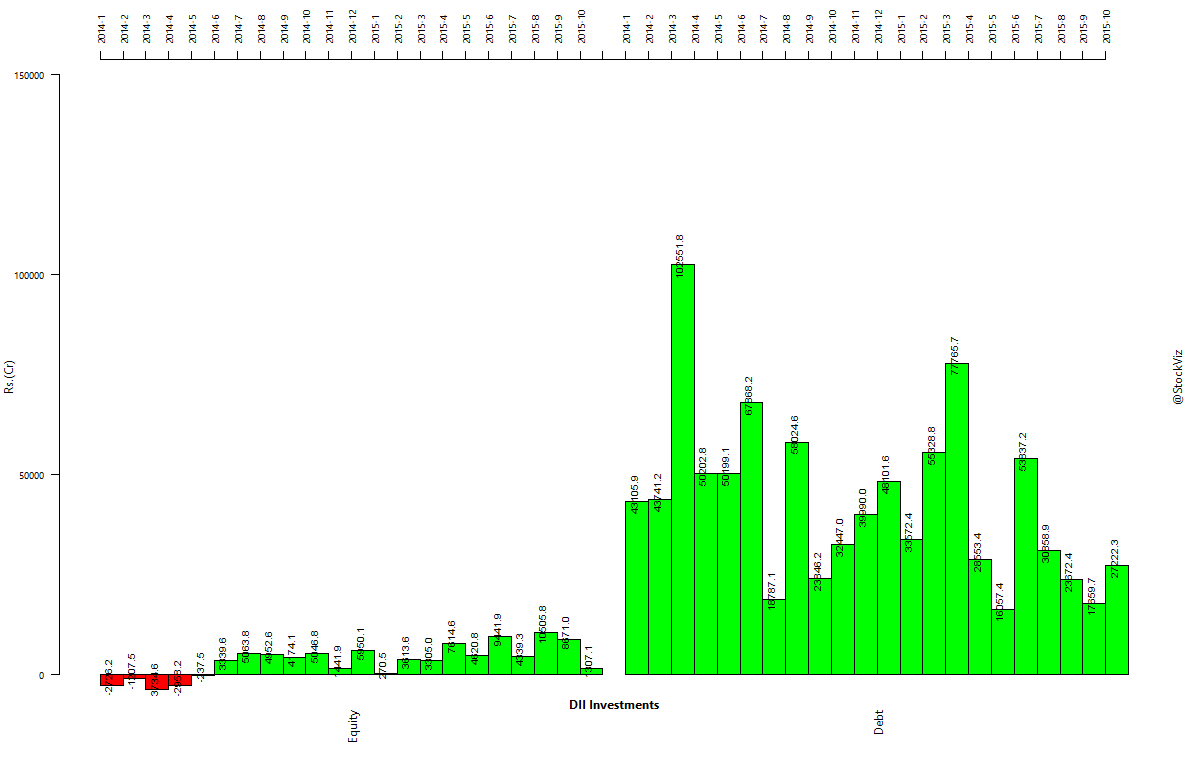The Turn of the Month Effect
A recent paper in the Financial Analysts Journal looks at the Turn of the Month effect on equities. Equity Returns at the Turn of the Month, John J. McConnell and Wei Xu:
Does it apply to Indian markets?
The study skips over the Indian markets. So we did a quick test on the CNX 100 index to check if the effect holds. Here’s the cumulative return chart between a Buy-and-Hold CNX 100 strategy (B&H, black) and a Turn-of-the-Month CNX 100 strategy (TOM, red):
Although the TOM strategy has lower-drawdowns, the B&H wins – both in terms of tax advantage and trading costs. The Turn-of-the-Month effect doesn’t seem to apply to Indian equities.
